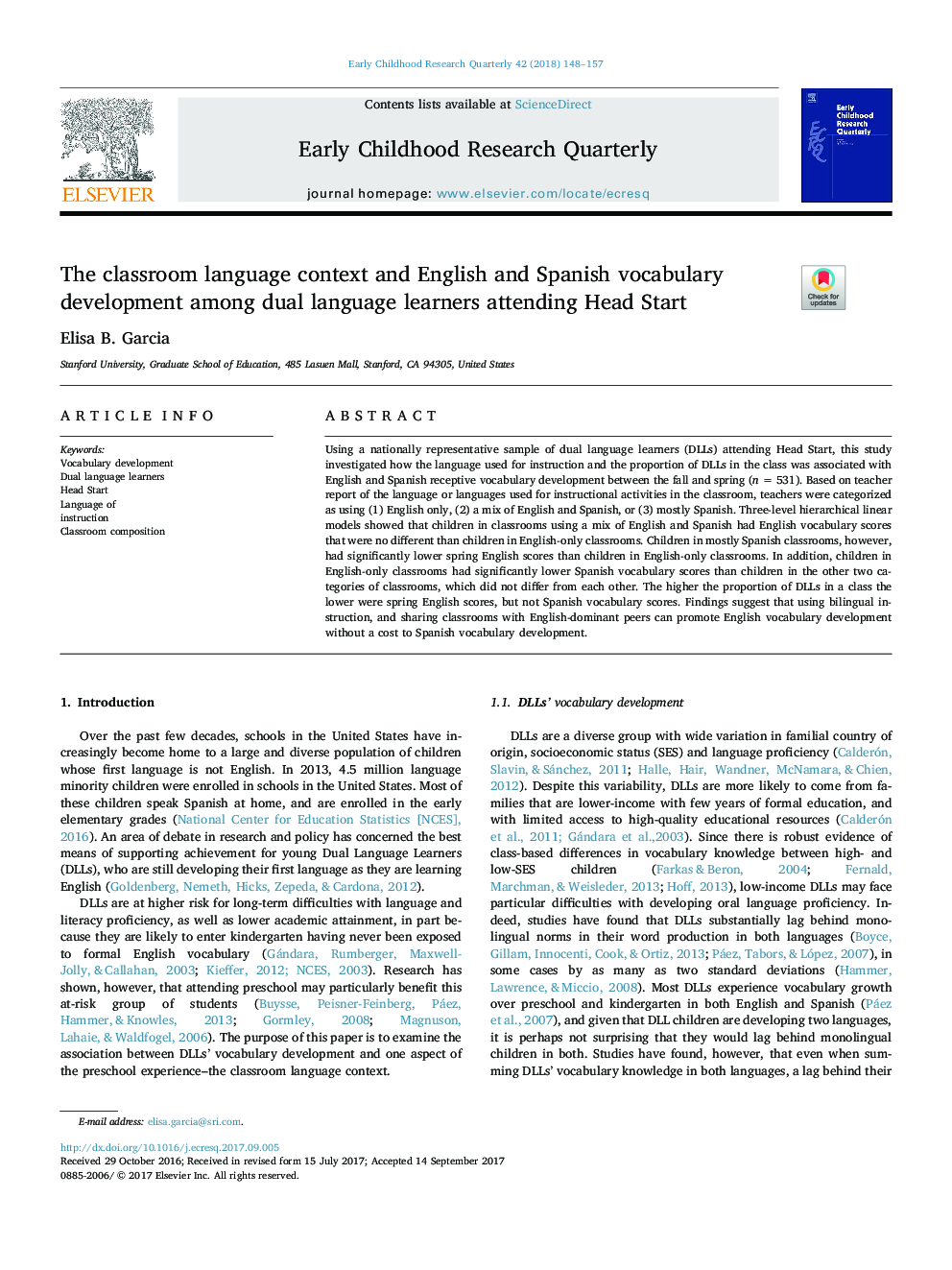| Article ID | Journal | Published Year | Pages | File Type |
|---|---|---|---|---|
| 6840683 | Early Childhood Research Quarterly | 2018 | 10 Pages |
Abstract
Using a nationally representative sample of dual language learners (DLLs) attending Head Start, this study investigated how the language used for instruction and the proportion of DLLs in the class was associated with English and Spanish receptive vocabulary development between the fall and spring (n = 531). Based on teacher report of the language or languages used for instructional activities in the classroom, teachers were categorized as using (1) English only, (2) a mix of English and Spanish, or (3) mostly Spanish. Three-level hierarchical linear models showed that children in classrooms using a mix of English and Spanish had English vocabulary scores that were no different than children in English-only classrooms. Children in mostly Spanish classrooms, however, had significantly lower spring English scores than children in English-only classrooms. In addition, children in English-only classrooms had significantly lower Spanish vocabulary scores than children in the other two categories of classrooms, which did not differ from each other. The higher the proportion of DLLs in a class the lower were spring English scores, but not Spanish vocabulary scores. Findings suggest that using bilingual instruction, and sharing classrooms with English-dominant peers can promote English vocabulary development without a cost to Spanish vocabulary development.
Related Topics
Social Sciences and Humanities
Psychology
Applied Psychology
Authors
Elisa B. Garcia,
